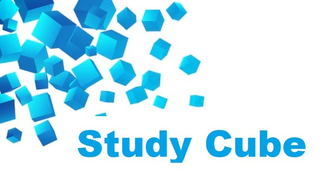A computer is an electronic device designed to process, store, and display information. It follows a set of instructions called a program to perform specific tasks, making it one of the most versatile tools in modern technology. Computers are used in a wide range of fields, from business and education to science and entertainment.
Key Components of a Computer
Hardware: The physical parts of a computer, including:
Central Processing Unit (CPU): Known as the "brain" of the computer, the CPU processes instructions and manages tasks.
Memory (RAM): Random Access Memory temporarily stores data that the CPU needs while performing tasks.
Storage: Hard Disk Drives (HDDs) or Solid-State Drives (SSDs) store data permanently, including the operating system, applications, and files.
Input Devices: Devices like keyboards, mice, and scanners allow users to input data.
Output Devices: Monitors, printers, and speakers display or produce the results of computations.
Motherboard: The main circuit board connects all hardware components and enables them to communicate.
Software: Programs and applications that instruct the hardware to perform tasks. Software is divided into:
System Software: Manages the hardware and provides an environment for application software. Examples include operating systems like Windows, macOS, and Linux.
Application Software: Programs designed for specific tasks, like Microsoft Word, Adobe Photoshop, and web browsers.
Utility Software: Provides additional functionality to maintain and optimize computer performance, like antivirus programs and disk cleanup tools.
Types of Computers
Supercomputers: Extremely powerful computers used for complex calculations and simulations in fields like climate research, nuclear science, and artificial intelligence.
Mainframes: Large, powerful systems used by large organizations for processing and storing vast amounts of data.
Personal Computers (PCs): Designed for individual use, these include desktops, laptops, and tablets.
Embedded Systems: Specialized computers embedded within other devices, like smartphones, microwaves, and cars.
Basic Functions of a Computer
Input: Accepts data from input devices.
Processing: Processes the data through the CPU.
Storage: Saves data and instructions for future use.
Output: Sends processed information to output devices for display or other forms of output.
Control: Manages and coordinates the above functions to work efficiently.
Applications of Computers
Education: E-learning, online research, virtual labs.
Business: Accounting, marketing, and management through software applications.
Healthcare: Medical imaging, patient records, diagnostics.
Science and Research: Data analysis, simulations, and experiments.
Entertainment: Gaming, streaming, animation, and virtual reality.
Advantages of Computers
Speed: Computers can process data millions of times faster than humans.
Accuracy: They perform calculations and operations without error, given correct instructions.
Automation: Can perform repetitive tasks automatically with minimal human intervention.
Storage: Computers can store large amounts of data and recall it instantly.
Connectivity: Allows for communication across distances, especially through the internet.
The Future of Computers
With advancements in artificial intelligence, quantum computing, and robotics, the future of computers promises even faster, more efficient, and intelligent systems that can learn, adapt, and potentially revolutionize numerous fields
